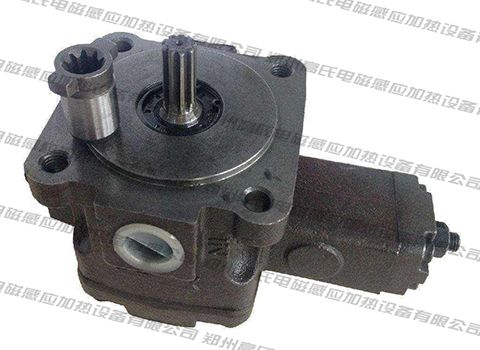The vane is an important component of the vane pump, and it is also the main heat treatment part. During the working process of the vane pump, the vane will move up and down close to the inner surface of the stator through the action of high-pressure oil. At this time, the top of the vane will generate frictional heat, which will increase the local temperature, and it will also withstand high-pressure oil. huge impact. Therefore, the blade needs to have high temperature resistance, high wear resistance and stability against tempering, and high strength. Therefore, the material for making blades needs to choose high-speed steel with better performance, and quench it through a high-frequency induction heating machine. Its production process includes blanking, forging billets, annealing treatment, rough machining, quenching and tempering treatment, and finishing machining. , inspection, etc.
When making blades, annealing treatment, that is, preparatory heat treatment, is performed first. The purpose is to reduce the hardness of the raw material high-speed steel and prepare for the subsequent cutting and organization. Therefore, its temperature is suitable for above 570 ° C, which can make the blade The solid tissue of the tempered wire is obtained, which has certain strength, hardness and toughness to ensure its internal comprehensive mechanical properties. When the blade is subjected to surface quenching heat treatment, it must be operated in a deoxidized environment. The induction coil of the high-frequency induction heating machine should keep a proper distance from the blade to prevent local overheating or overburning. Spray water The hole will not be blocked and will not affect the effect of blade quenching.
During the quenching process, the blade can be quenched step by step, which is beneficial to prevent the carbide from being precipitated during the high-temperature cooling process, reduces the effect of thermal stress, and ensures that the internal and external temperatures are consistent. Realize the transformation of austenite into martensite, and finally perform high-temperature tempering treatment, but the blade needs to be subjected to low-temperature aging treatment before tempering, otherwise, quenching cracks will appear on the surface of the blade. In order to avoid distortion of the blade during the quenching process of the high-frequency induction heating machine, it is necessary to use a fixture to heat it vertically during heating, and keep a distance of 2mm between the inductor and the blade. Fixtures should be used to clamp it, otherwise there will be insufficient tempering, the produced blades cannot meet the needs of the working environment, and the technical performance is not up to standard.




 en
en  cn
cn  jp
jp  ko
ko  de
de  es
es  it
it  ru
ru  pt
pt  vi
vi  th
th  pl
pl 







 GS-ZP-1200
GS-ZP-1200


